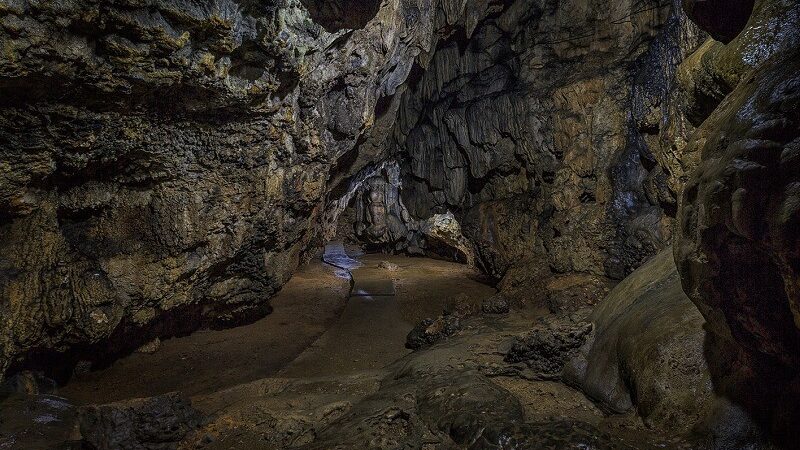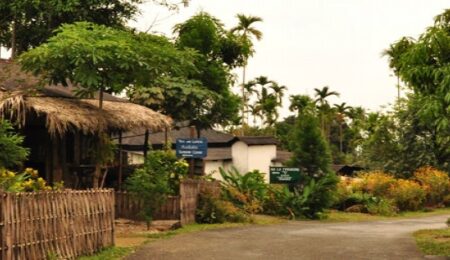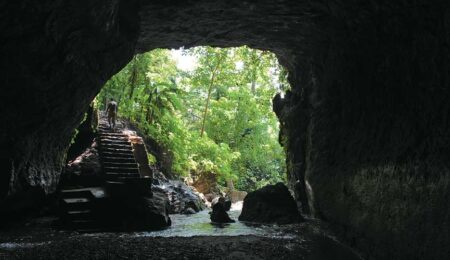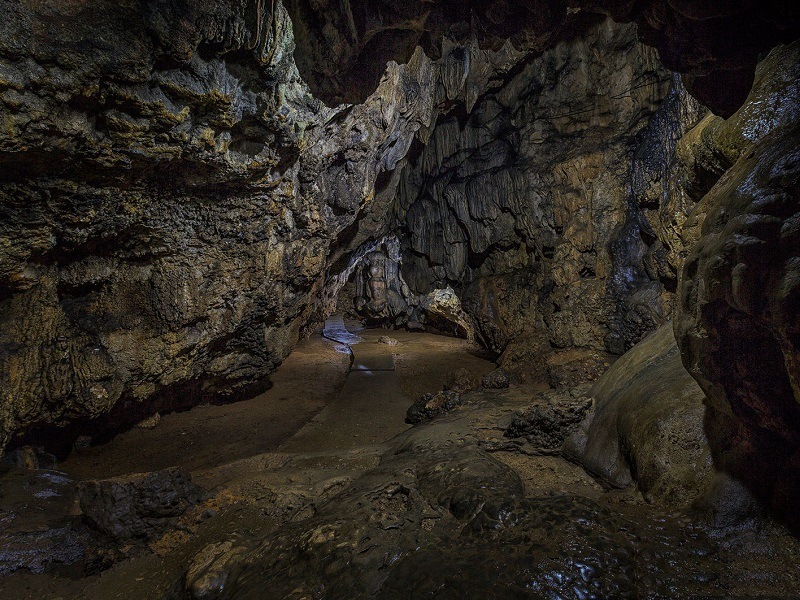 Nestled within the verdant landscapes of Meghalaya, a state in northeastern India, lies a hidden gem that lures adventurers and nature enthusiasts alike – Mawsmai Cave. Renowned for its mystical allure and awe-inspiring formations, this underground wonder showcases the geological wonders and rich biodiversity that Meghalaya is celebrated for.
Nestled within the verdant landscapes of Meghalaya, a state in northeastern India, lies a hidden gem that lures adventurers and nature enthusiasts alike – Mawsmai Cave. Renowned for its mystical allure and awe-inspiring formations, this underground wonder showcases the geological wonders and rich biodiversity that Meghalaya is celebrated for.
Located in the village of Mawsmai, near Cherrapunjee, Mawsmai Cave is one of the most accessible and popular caves in Meghalaya. It forms a part of the fascinating Khasi Hills Cave System, which encompasses several other captivating caves in the region. Mawsmai Cave’s unique features and mesmerizing formations make it a must-visit destination for locals and tourists alike.
Upon entering Mawsmai Cave, visitors are transported to an enchanting subterranean world. The cave boasts a labyrinth of passages, galleries, and chambers, inviting adventurers to explore like no other. As sunlight filters through narrow openings, casting ethereal rays, visitors are greeted with a mysterious ambiance that ignites the imagination.
Mawsmai Cave is renowned for its impressive stalactite and stalagmite formations, created over centuries by the slow deposition of mineral-rich water. The cave’s damp and dark environment provides the perfect conditions for these formations to flourish, giving rise to stunning natural sculptures that adorn the cave’s walls and ceilings. Delicate curtains of stalactites hang from the ceiling, while stalagmites rise from the cave floor as if frozen in time.
The Mawsmai Cave is in the East Khasi Hills district of Meghalaya, India. It is one of the most popular tourist destinations in the state and is known for its spectacular limestone formations. The cave is believed to be over 200 million years old and part of the Krem Mawmluh cave system. It is one of the largest cave systems in Meghalaya and is home to various wildlife, including bats, snakes, and spiders. The cave was first discovered by British surveyor J.H. Hutton in 1881. However, it was not until 1887 that the first scientific exploration of the cave was conducted by Dr. A.C. Haddon.
Since then, the cave has been a popular destination for tourists and adventurers worldwide. In recent years, the cave has been developed for tourism by installing electric lights and a concrete walkway.
The play of light within the cave creates a mesmerizing spectacle. When illuminated, the stalactites and stalagmites glisten, casting surreal shadows that dance upon the cave walls. The natural formations take on various shapes and sizes, resembling cascades, pillars, and mythical creatures, inspiring a sense of wonder and exploration.
Mawsmai Cave is not just a geological marvel but also home to a thriving ecosystem. The cave’s dark recesses shelter various species, including bats and insects that have adapted to thrive in the subterranean environment. As visitors venture deeper into the cave, they may catch glimpses of bats flitting about, their presence adding to the intrigue of the experience. The cave’s inhabitants play a vital ecological role, contributing to pollination, seed dispersal, and nutrient cycling within the surrounding ecosystem.
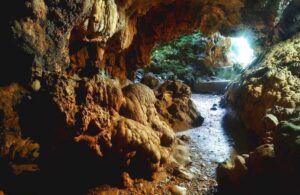 Exploring Mawsmai Cave is an adventure that caters to all levels of enthusiasts. The main section of the cave is easily accessible, with a well-maintained pathway and proper lighting. As visitors navigate the passages, they are accompanied by knowledgeable guides who share fascinating insights about the cave’s history, geology, and the unique flora and fauna that call it home. The guided tours ensure a safe and informative experience, enhancing the appreciation for this remarkable natural wonder.
Exploring Mawsmai Cave is an adventure that caters to all levels of enthusiasts. The main section of the cave is easily accessible, with a well-maintained pathway and proper lighting. As visitors navigate the passages, they are accompanied by knowledgeable guides who share fascinating insights about the cave’s history, geology, and the unique flora and fauna that call it home. The guided tours ensure a safe and informative experience, enhancing the appreciation for this remarkable natural wonder.
While Mawsmai Cave may not be as expansive as some of the larger caves in Meghalaya, its accessibility and captivating beauty make it an ideal destination for both seasoned spelunkers and first-time explorers. The cave’s mystical ambiance and stunning formations offer a memorable adventure that captivates the senses and leaves visitors in awe of nature’s wonders.
Beyond its geological and ecological significance, Mawsmai Cave is culturally important to local communities. The cave is steeped in local folklore and legends, with stories passed down through generations that add a sense of mysticism and spirituality to the cave’s existence. Mawsmai Cave is often associated with ancient tales of gods and goddesses, deepening the cultural significance of this natural marvel.
Preserving the delicate ecosystem of Mawsmai Cave is paramount. Visitors are encouraged to follow responsible tourism practices, such as refraining from touching or damaging formations, not disturbing wildlife, and leaving no trace of their visit. Conservation efforts and community involvement play vital roles in safeguarding the cave’s ecological integrity and cultural significance.
In conclusion, Mawsmai Cave is a testament to Meghalaya’s geological wonders and natural beauty. Its enchanting formations, thriving ecosystem, and cultural significance make it a destination that captivates the hearts and minds of those who venture into its depths. As we continue to appreciate and explore Mawsmai Cave, let us also embrace the responsibility of preserving and conserving this extraordinary natural treasure for future generations.


